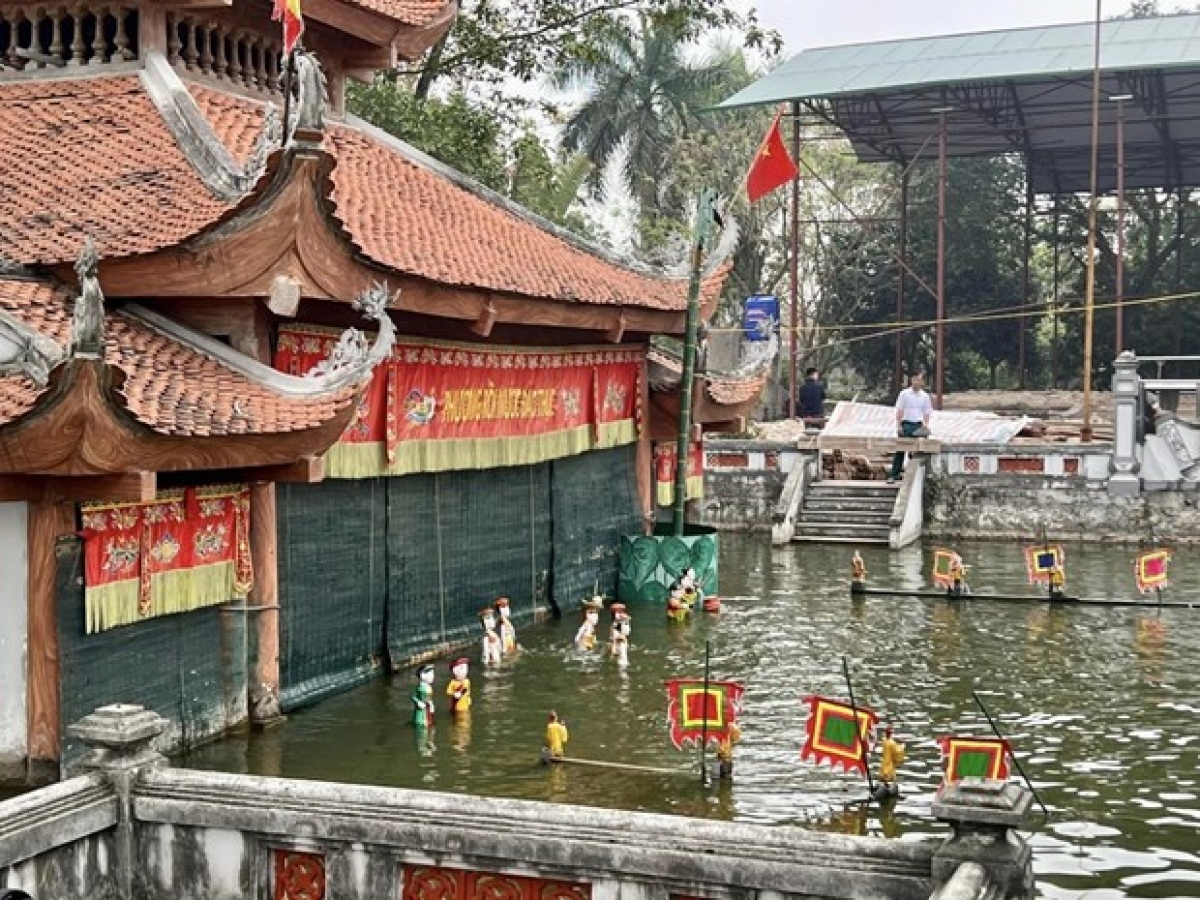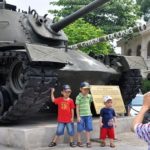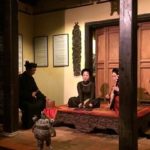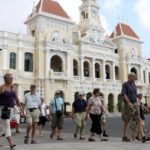The Thuy Dinh stage area at the Cultural Centre of Hanoi will play host to a festive celebration in honor of National Reunification Day (April 30) and May Day. Featuring the decorations typical of Northern Vietnam villages, this unique event promises to be an unforgettable experience.
Folk puppet artisans and non-professional members of traditional water puppet troupes from all around Hanoi will come together to put on an enthralling water puppet show that will last for a minimum of 25 minutes.
Each performance puppet show contest should re-enact glorious historical events of the nation, depicting the daily life and work of Vietnamese people, in order to promote the cultural value of Vietnam. Through these performances, spectators will gain a greater understanding of the country’s history, its people and its culture. This will help to foster a deeper appreciation of the nation and its heritage, cultivating a sense of pride and patriotism in generations to come.
The event provides a great chance for water puppet troupes to share their expertise in traditional art performances. By exchanging experiences, they can gain new insights and broaden their knowledge of the fascinating art form.
The puppeteers stand behind a split-bamboo screen and control the puppets with long bamboo rods and strings connected to the puppets’ hands and feet. The puppets are carved out of wood and then lacquered.
Water puppetry is a unique form of traditional art in Vietnam, which has been passed down through generations. It is a highly popular art form in the country, with performances often taking place in festivals and ceremonies. The shows usually tell stories about rural life, such as farming, fishing, and festivals, as well as tales of Vietnamese folklore and legends.
Water puppetry is an ancient and captivating art form that originated in the Red River Delta in Northern Vietnam. This art form dates back to the 10th century and requires skillful puppeteers to control the puppets behind a split-bamboo screen. The puppets, which are typically made of wood and lacquered, are connected to long bamboo rods and strings which the puppeteers use to control their movements.
Water puppetry is a beloved form of traditional art in Vietnam and has been passed down through generations. It is very popular in the country and performances are often seen in festivals and ceremonies. These shows tell stories about rural life, such as farming, fishing, and festivals, as well as Vietnamese folklore and legends. Audiences can expect to be enthralled by this captivating art form as they watch the puppets come to life.
Thach That and Dao Thuc villages, located in Hanoi, as well as Rach and Nguyen Xa villages, situated in the nearby provinces of Nam Dinh and Thai Binh, are some of the earliest known centres of water puppetry. For centuries, these villages have been renowned for their contributions to this traditional art form. Through their history and culture, they have provided an invaluable source of inspiration to the artists who practice this form of puppetry and to the audiences that have come to appreciate it.
Traditionally, water puppetry performances have been captivating audiences for centuries by portraying the daily life of Vietnamese farmers (cultivating, tending buffalo, and catching fish), communal entertainment (swimming races and dragon dancing), or historical legends (like Le Loi returning the precious sword to the Golden Turtle in Hoan Kiem Lake).
Ancient house in Ma May
NDO – Ma May, a rare quarter that still retains several old houses, has created one of the characteristics of Hanoi. Hanoi’s streets are becoming increasingly crowded and traditional features can sometimes be hidden behind modern life. But if one takes the time to relax and look around, the ancient features begin to reveal themselves.
Hanoi, HCM City see good growth of tourism revenue
NDO – In the first ten months of 2016, the revenue of Ho Chi Minh City’s tourism industry amounted to VND80 trillion while Hanoi’s reached over VND50 trillion.









